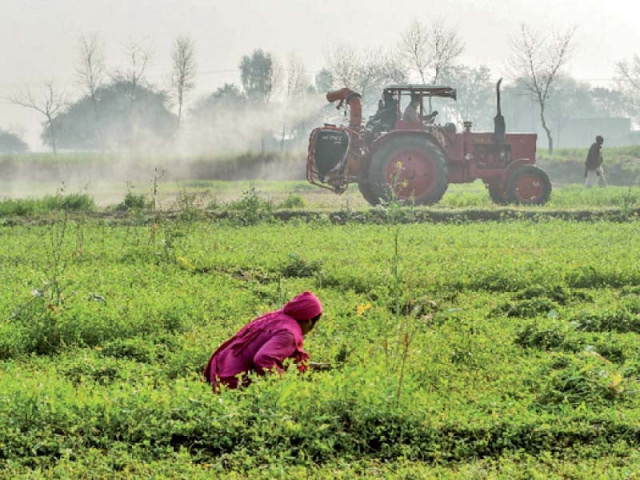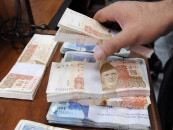Navigating the agriculture sector
Reforms are required to improve competitiveness, productivity and exports

Pakistan is an agrarian economy, and the agriculture sector includes crops, livestock, fisheries, and forestry. Agriculture accounts for roughly 25% of GDP, and Pakistan is among the world’s top producers of wheat, cotton, sugarcane, mangoes, dates, rice, and oranges. The agriculture sector not only meets domestic demand for food but also contributes significantly to the country’s export earnings. According to the Pakistan Bureau of Statistics, the value of agricultural exports in 2023-24 was $5.2 billion, an increase of 13% from the previous year. The major agricultural exports include rice, fruits, vegetables, cotton yarn, raw cotton, fish, and fish preparations. The growth in agricultural exports was driven by improved productivity, better prices, and increased demand in the global market. Pakistan has also invested in modernising its agriculture sector by adopting new technologies, enhancing water management, improving seed quality, expanding cultivated land for high-value crops, strengthening linkages between processors and growers, and providing incentives for agro-processing.
Among the major crops grown in Pakistan, rice, sugarcane, and cotton are important for both domestic consumption and export. Rice is the second most important staple food crop after wheat and occupies about 10% of the total cropped area. Pakistan produces different varieties of rice, including basmati, famous for its aroma and quality. Pakistan is expected to produce a record 9 million tonnes of rice during the fiscal year 2022-23 (FY23), compared to 8.9 million tonnes produced during FY22. Experts believe that better weather conditions will play a key role in this record production. Pakistan exported 3.9 million tonnes of rice worth $2.2 billion in 2020-21, making it the 10th largest rice exporter in the world.
Sugarcane is grown on about 13% of the cropped area and is used for sugar production as well as ethanol and other by-products. Pakistan produced 67.1 million tonnes of sugarcane in 2020-21, making it the fifth-largest sugarcane producer in the world. However, due to a low sugar recovery rate and high cost of production, Pakistan has to import sugar to meet its domestic demand. Sugar production in 2023-24 is forecasted at 7.05 million tonnes, 3% above the 2022-23 estimate. The marginal increase is due to expectations for a recovery in cane area harvested compared to the flood-damaged 2022-23 crop. Cotton is the most important cash crop and a major source of raw material for the textile industry, accounting for about 60% of total exports. Pakistan produced 4.8 million tonnes of cotton in 2020-21, making it the fifth-largest cotton producer in the world. However, due to low yield per hectare and high pest infestation, Pakistan has to import cotton to meet its domestic demand. Cotton production is forecasted to rebound 36% to 5.3 million bales in 2023-24. After the flood-damaged 2022-23 crop, yields should return to trend, while better returns from competing crops will limit area expansion.
Pakistan is one of the most water-stressed countries in the world, with per capita water availability of less than 1,000 cubic meters. The main source of irrigation water is the Indus River system, which depends on snowmelt and rainfall in the upstream regions. However, due to climate change, variability in precipitation patterns, and melting glaciers, water availability is becoming more uncertain and erratic. Moreover, due to inefficient water management practices, aging infrastructure, and poor governance, a large amount of water is lost or wasted in conveyance and distribution. According to a World Bank report, Pakistan loses about $12 billion annually due to poor water management.
Pakistan’s agriculture sector is characterised by low mechanisation, outdated technology, and weak extension services. According to a report by the U.S. Department of Commerce, only about 50% of farmers use tractors, while less than 10% use other farm machinery such as harvesters, planters, and sprayers. The use of modern inputs such as improved seeds, fertilisers, and pesticides is also low compared to other countries. Moreover, due to a lack of access to credit, information, and markets, many farmers are unable to adopt new technologies and practices that can enhance their productivity and income.
The government of Prime Minister Imran Khan and his main rival Shehbaz Sharif have different views on how to address the economic crisis, energy sector reforms, and trade policy. Fiscal consolidation measures, such as reducing subsidies and increasing tariffs, have increased the cost of production and reduced the profitability of farmers. The floods of 2022 have also damaged crops and infrastructure, leading to a contraction of agricultural output for the first time in more than 20 years. The World Bank estimates that real GDP growth will slow down to 0.4% in FY23, and that poverty will increase to 37.2%. To overcome these challenges, Pakistan needs to implement sustained macro-fiscal and structural reforms, improve its competitiveness and productivity, and diversify its agricultural exports.
Pakistan has huge potential to increase its exports of rice, sugarcane, and cotton products by diversifying its markets, enhancing its quality standards, branding its products, and complying with international trade regulations and requirements. For example, Pakistan can tap into the lucrative markets of China, Turkey, Qatar, Kenya, Afghanistan, UAE, and Saudi Arabia for its rice exports by offering different varieties (such as basmati, irri-6, parboiled, etc.), meeting their quality specifications (such as moisture content, broken percentage, etc.), and ensuring timely delivery. Similarly, Pakistan can increase its exports of sugar by improving its milling efficiency, reducing its cost of production, and exploring new markets in Africa and Asia. Moreover, Pakistan can boost its exports of cotton products by upgrading its textile industry, improving its compliance with environmental and social standards, and taking advantage of preferential trade agreements with various countries.
THE WRITER IS A MEMBER OF PEC AND HAS DONE MASTER’S IN ENGINEERING
Published in The Express Tribune, October 9th, 2023.
Like Business on Facebook, follow @TribuneBiz on Twitter to stay informed and join in the conversation.



















COMMENTS
Comments are moderated and generally will be posted if they are on-topic and not abusive.
For more information, please see our Comments FAQ